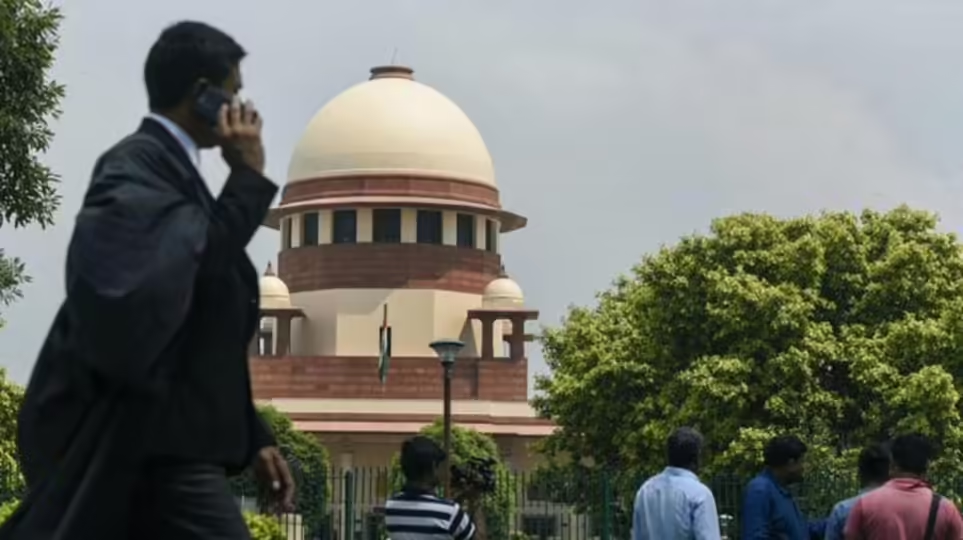Supreme Court to Assess Plea for Consolidation of Multiple FIRs Against YouTuber Over Alleged Obscene Content
Fri, 21 Feb 2025

The Supreme Court of India has agreed to examine a petition filed by a YouTuber seeking the consolidation of multiple First Information Reports (FIRs) registered against him in various states for allegedly making obscene and derogatory remarks in online content. The plea, heard by a bench comprising Justices Hrishikesh Roy and Prashant Kumar Mishra, argues that the proliferation of identical cases across jurisdictions creates procedural and logistical challenges for the accused. Court records indicate that the petitioner faces at least seven FIRs in states including Maharashtra, Uttar Pradesh, Madhya Pradesh, and Chhattisgarh, all stemming from complaints lodged between March and August 2023. Legal documents reveal the petitioner’s reliance on Section 406 of the Code of Criminal Procedure (CrPC), which permits the transfer of cases to a single court to “serve the ends of justice.” The plea emphasizes Article 21 of the Indian Constitution, citing the right to a fair trial and protection against “multiple prosecutions for the same cause of action.” Data from the National Crime Records Bureau (NCRB) shows a 24% annual increase in cyber-related FIRs between 2021 and 2023, with cases involving online speech violations constituting approximately 18% of this category. The bench has issued notices to the Union Ministry of Home Affairs and the respective state governments, seeking detailed responses within three weeks. The FIRs allege violations of Sections 294 (obscene acts), 500 (defamation), and 509 (insulting modesty of women) of the Indian Penal Code (IPC), alongside provisions of the Information Technology Act, 2000. Police reports from Maharashtra and Uttar Pradesh reference specific videos uploaded between February and July 2023, which purportedly targeted women, political figures, and religious communities. A preliminary analysis of the content by the Indian Institute of Technology (IIT) Delhi’s cyber forensics team, cited in one FIR, identified “repetitive use of inflammatory language” in 14 videos, each averaging 1.2 million views. The Supreme Court’s decision follows a 2022 ruling in Satender Kumar Antil vs CBI, which underscored the need for courts to consider clubbing FIRs arising from identical allegations to prevent “abuse of process.” However, state police authorities have opposed the plea, arguing that jurisdictional autonomy must be preserved. Data from the Supreme Court’s e-committee indicates that 12% of transfer petitions filed under CrPC Section 406 in 2022–23 involved cybercrime cases, with a 33% approval rate for clubbing requests. Legal experts remain divided on the issue. Senior Advocate Menaka Guruswamy, in a 2023 lecture at the National Law University Delhi, noted that clubbing FIRs could reduce judicial backlog, citing a 40% overlap in cybercrime complaints nationwide. Conversely, former Solicitor General Ranjit Kumar, in an op-ed for the Indian Journal of Constitutional Law, cautioned against “premature consolidation,” emphasizing that distinct FIRs may involve unique evidence or victims. The Delhi High Court’s 2021 ruling in Sarvesh Kaushal vs State of NCT declined to club FIRs in a similar case, observing that “geographical diversity of offenses complicates unified proceedings.” The petitioner’s affidavit cites a 2018 Law Commission report recommending procedural reforms to address multi-state FIRs, particularly in cyber-related cases. According to the report, 62% of such complaints between 2015 and 2018 involved overlapping jurisdictions. The Supreme Court registry has scheduled the next hearing for September 28, 2023, by which time state governments must submit affidavits detailing the status of investigations. Background checks reveal the YouTuber, whose channel has 850,000 subscribers, was first charged in March 2023 after a complaint by the National Commission for Women (NCW). Subsequent FIRs emerged from civil society groups and individual complainants. Analytics from YouTube show that the channel, active since 2020, saw a 200% spike in viewership between January and June 2023, coinciding with the upload of the contentious content. Platform moderators had issued three community guidelines strikes against the channel before its temporary suspension in July 2023. The Supreme Court’s intervention aligns with growing judicial scrutiny of online speech regulation. In 2023 alone, the court admitted 22 petitions involving challenges to Section 66A of the IT Act (struck down in 2015 but still cited in FIRs) and overlapping prosecutions. A 2023 study by the Centre for Internet and Society (CIS) found that 37% of online content-related FIRs in the past five years faced jurisdictional disputes, prolonging trials by an average of 18 months. As the case progresses, stakeholders are monitoring its implications for India’s evolving digital jurisprudence. The Ministry of Electronics and Information Technology (MeitY) recently reported that 2,500 content removal requests were issued to social media platforms in Q1 2023, a 45% increase from the previous quarter. Legal analysts suggest the court’s final decision could influence pending legislation, including the proposed Digital India Act, which seeks to clarify jurisdictional protocols for cyber offenses. The Supreme Court has directed the petitioner to submit a consolidated chart of all FIRs, including dates, sections invoked, and investigation statuses, by the next hearing. Procedural history shows the petitioner previously approached the Madhya Pradesh High Court in May 2023, which declined interim relief, stating that “jurisdictional courts are competent to address grievances.”
